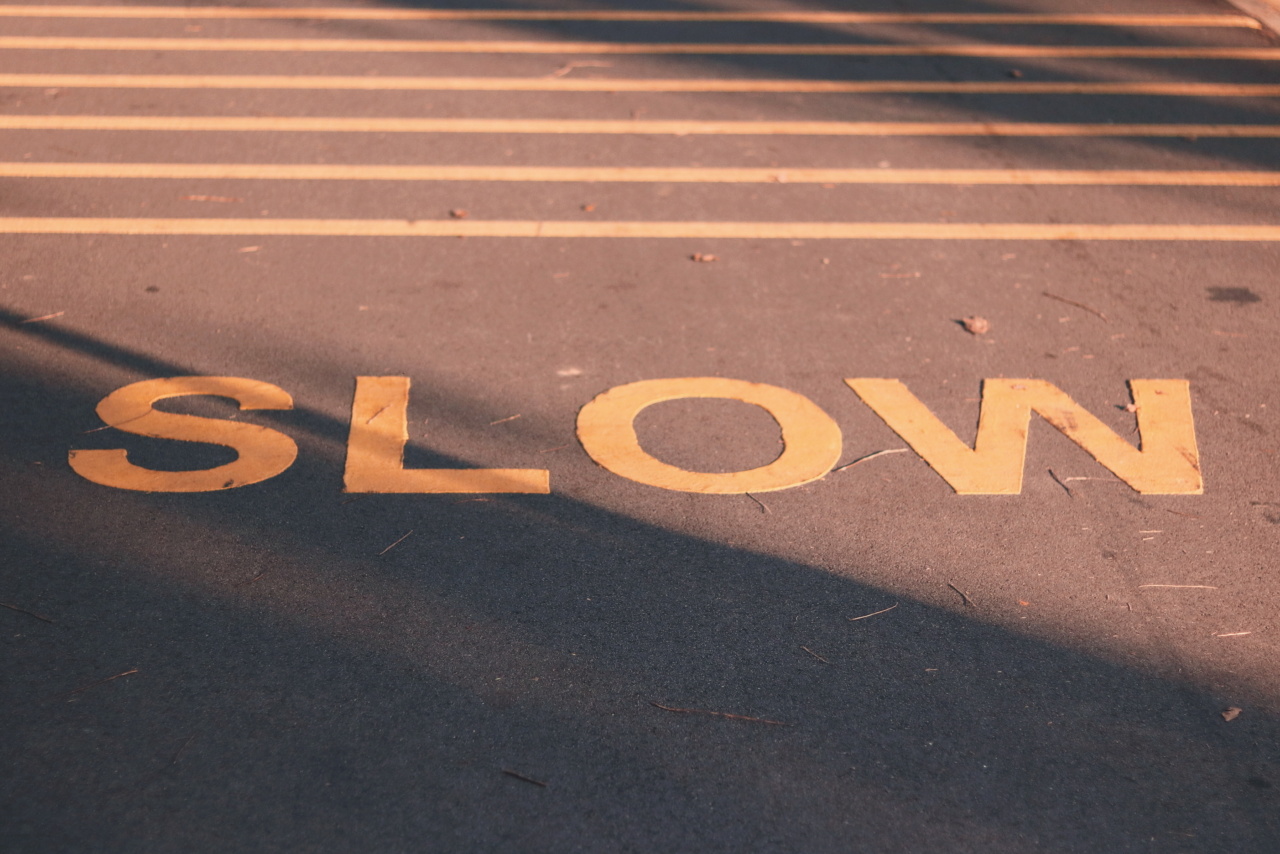Walking is a basic human movement that we often take for granted. However, the way we walk can provide valuable insights into our overall health and well-being.
While some people naturally have a slower gait than others, slow walking can also be an indication of an underlying health issue. In this article, we will explore the various causes and implications of slow walking, and why it should not be dismissed as a trivial matter.
Understanding the Mechanics of Walking
Walking is a complex process that involves the coordination and integration of various muscles, joints, and sensory systems. The intricate dance between our brain, nervous system, and musculoskeletal system allows us to move fluidly and efficiently.
When any of these components are compromised, it can lead to altered walking patterns, including slow walking.
Medical Conditions Associated with Slow Walking
There are numerous medical conditions that can contribute to slow walking. One such condition is Parkinson’s disease, a progressive nervous system disorder that affects movement.
Individuals with Parkinson’s often experience a shuffling gait and a decrease in their walking speed. Other neurological conditions, such as multiple sclerosis and stroke, can also cause slow walking due to muscle weakness or impaired coordination.
Additionally, musculoskeletal disorders such as arthritis and joint degeneration can lead to pain and stiffness, making walking more challenging and slower.
Chronic pain conditions, like fibromyalgia, can also impact mobility and contribute to a reduced walking speed.
Furthermore, certain cardiovascular diseases, including peripheral arterial disease and heart failure, can cause poor circulation, fatigue, and shortness of breath, resulting in slower walking.
Respiratory conditions, such as chronic obstructive pulmonary disease (COPD), can similarly limit one’s ability to move at a normal pace.
Psychological Factors and Slow Walking
It’s essential to recognize that slow walking is not solely a result of physical ailments but can also have psychological roots.
Depression and anxiety can significantly impact a person’s motivation, energy levels, and overall bodily functions. These mental health disorders may manifest as a sluggish gait, blunting one’s movements and slowing down their walking speed.
In some cases, individuals may develop a fear of falling, known as ‘post-fall syndrome,’ after experiencing a fall or other mobility-related incident.
This fear can lead to a cautious walking style characterized by slow, deliberate steps as the person tries to maintain balance and prevent further falls.
Age-Related Changes and Slow Walking
As we age, it’s natural for certain bodily functions to decline, including our walking speed.
Older adults tend to walk slower than their younger counterparts due to factors such as muscle loss, joint stiffness, and reduced cardiovascular capacity. However, while slower walking can be a normal part of aging, it should not be dismissed without considering potential underlying health issues.
Geriatric syndromes, including frailty and cognitive impairment, can also contribute to slower walking among older individuals.
These conditions affect the overall strength, balance, and mental processing required for efficient walking, often resulting in a noticeable decrease in speed.
Implications of Slow Walking
Slow walking can have a range of implications, both physical and psychological, that should not be ignored. From a physical standpoint, slower gait has been linked to an increased risk of falls, reduced physical activity, and overall functional decline.
The decreased mobility associated with slow walking can impact one’s quality of life, limit independence, and hinder participation in various activities.
Psychologically, slow walking can negatively affect an individual’s self-esteem and mental well-being.
The frustration and self-consciousness that may arise from feeling unable to keep up with others can lead to isolation, decreased social interactions, and a decline in overall mental health.
When to Seek Medical Evaluation
If you or a loved one is experiencing persistent slow walking, it is crucial to consult a healthcare professional for a thorough evaluation.
They will consider various factors, including medical history, a physical examination, and possibly additional diagnostic tests, to assess the underlying cause of slow walking. Prompt medical attention allows for early intervention and treatment, potentially preventing further complications and improving overall prognosis.
Treatment and Management Approaches
The appropriate treatment and management of slow walking depend on the underlying cause. In cases where the slow gait is a symptom of an existing medical condition, addressing and managing that condition can help improve walking speed and mobility.
Physical therapy and rehabilitation can play a significant role in improving walking patterns, increasing strength, and enhancing balance and coordination.
These interventions can be tailored to the individual’s specific needs and may include exercises, gait training, assistive devices, and pain management techniques.
In some instances, medications may be prescribed to address the underlying medical condition or to manage symptoms that contribute to slow walking.
Surgical interventions, such as joint replacements, can also be considered in cases of severe musculoskeletal impairment.
A Holistic Approach to Maintaining Mobility
While medical interventions are essential, taking a holistic approach to maintaining mobility and preventing slow walking is equally crucial.
Lifestyle modifications, such as regular exercise, maintaining a healthy weight, and practicing proper nutrition, can positively impact overall physical function. Engaging in low-impact activities such as walking, swimming, or tai chi can help optimize muscle strength, flexibility, and cardiovascular health.
Moreover, promoting mental well-being through stress management techniques, social support, and addressing psychological factors can also contribute to improved walking speed.
An integrated approach that addresses both the physical and psychological aspects is often the most effective in managing slow walking.
Conclusion
Slow walking should not be dismissed as a normal part of the aging process or simply a reflection of an individual’s natural gait.
It can be a sign of underlying medical conditions, psychological factors, or age-related changes that require attention and intervention. Recognizing the potential implications of slow walking and seeking appropriate medical evaluation and treatment can help individuals regain their mobility, preserve their independence, and enhance their overall well-being.






























